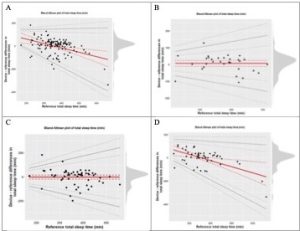College of Health
24 Assay of the Dreem Device on Sleep Metrics and an Exploration of Sleep Staging in Chronic Short Sleepers During Time in Bed Extension
Zachary Charles Mallender (University of Utah) and Christopher Depner (Health, Nutrition, and Kinesiology, University of Utah)
Faculty Mentor: Christopher Depner (Health, Nutrition, and Kinesiology, University of Utah)
Despite clear and plentiful research that sleeping less than seven hours per night has a wide array of health consequences, a large portion of American adults report sleeping less than seven hours per night and thus receive chronic insufficient sleep. Many studies exploring the consequences of insufficient sleep are restricted to small sample sizes and short recording times due to a significant cost to gold-standard polysomnography in terms of expense, time, and reliance on trained sleep technicians to prepare and monitor subjects. Additionally, most studies adopt a design of interventional sleep restriction on otherwise healthy sleepers, which excludes people who receive long term insufficient sleep over months to years. Here, we attempt to explore possible solutions to these issues through the use of a sleep extension study using the Dreem headband, a wireless dry electrode consumer electroencephalography (EEG) device, to measure overall sleep metrics and EEG data. When compared to wrist-mounted actigraphy (fig 1), the Dreem indicates little systemic skew for data over 75% quality (as assigned by Dreem), but reports significant random error with limits of agreement starting approximately 70 minutes off of actigraphy baseline. Exploration of sleep metrics in baseline insufficient sleep vs interventional sleep extension (table 1) revealed an increase in total sleep time; increase in all recorded sleep stages; and no significant changes in sleep onset latency, wakefulness after sleep onset, or sleep efficiency. Although several limitations of producing high quality data were identified, the Dreem headband shows promise as a home environment sleep research device. With an improvement in data quality the Dreem, or another wireless consumer sleep device, has the potential to help advance the sleep field in ways that have traditionally proven inaccessible.

Figure 1: Bland-Altman plots showing comparative measure of total sleep time in minutes. Actiwatch data served as a reference device, which Dreem data was compared against. The red line represents calculated overall skew, and the solid grey lines represent the limits of agreement (LOA) for the two data sets. Dotted lines represent respective 95% CI. Panel A: all nights of data collected. Panel B: nights of greater than 85% quality. Panel C: nights of greater than 75% quality. Panel D: nights of less than 70% quality. Systemic skew underreporting sleep time for longer sleep episodes can be clearly seen in lower quality data, but is not present in green quality data. All data has roughly similar LOA, representing overall agreement of the Actiwatch and the Dreem headband, with a small increase in LOA for lower quality data. Data of 75% or higher virtually eliminates systemic skew.


